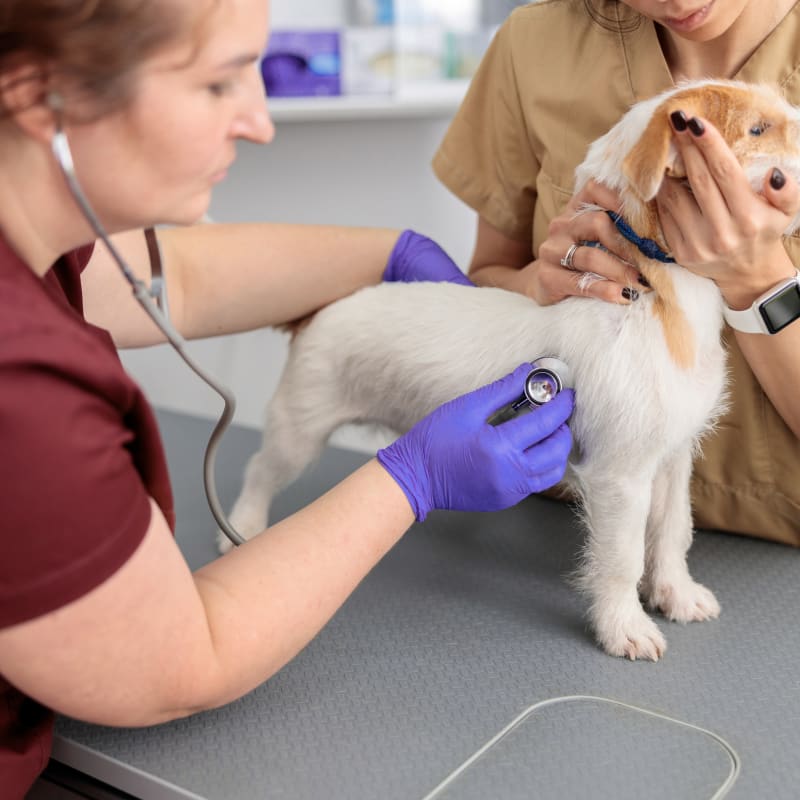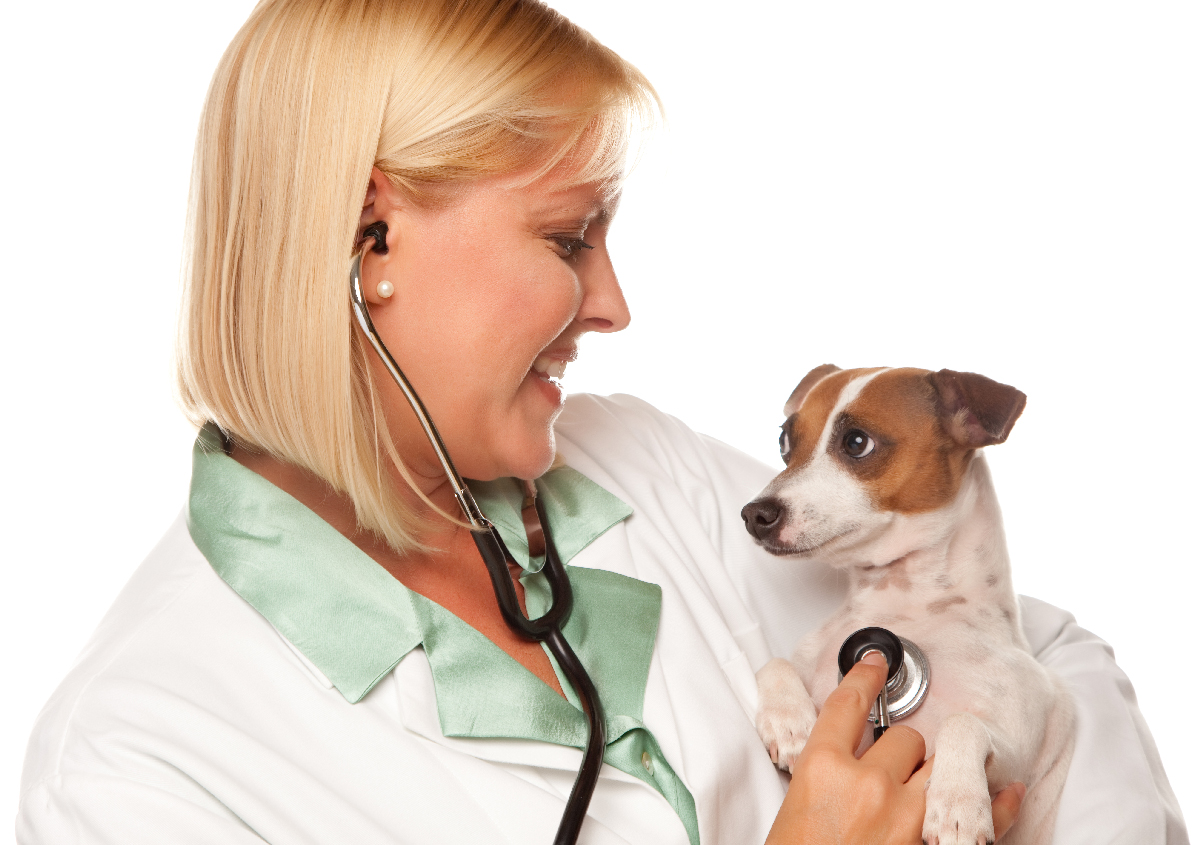How Accurate Are CT Scans For Dogs in Detecting Health Issues?}
Wiki Article
The Duty of Ultrasound and CT Scan in Modern Veterinary Practices: Insights From Experienced Professionals
In modern vet techniques, ultrasound and CT scans greatly boost analysis capacities. These imaging strategies give essential understandings right into animal health and wellness, leading treatment decisions. Experienced professionals acknowledge the special benefits of each method. Ultrasound supplies real-time analyses, while CT checks provide detailed physiological information. Comprehending their roles and applications raises crucial concerns concerning their influence on person results and the future of vet diagnostics. What understandings can be gained from their incorporated use?Understanding Ultrasound in Veterinary Medicine
Ultrasound is a vital analysis device in vet medication, using a non-invasive approach to envision inner frameworks. This imaging method employs high-frequency acoustic waves to create real-time photos of tissues and body organs, permitting veterinarians to examine conditions without surgical treatment. Typical applications consist of reviewing the heart, liver, kidneys, and reproductive body organs, in addition to keeping an eye on pregnancies.The procedure is relatively fast and can be done in different settings, making it an available option for vets. Unlike radiography, ultrasound gives in-depth info about soft cells and blood flow, which is essential for precise diagnoses.Veterinary professionals depend on ultrasound to detect problems such as growths, cysts, and fluid buildup. Its capability to guide biopsies and various other procedures better improves its utility in professional method. By providing a efficient and secure method to examine interior makeup, ultrasound has actually come to be a foundation of modern veterinary diagnostics.
The Benefits of CT Scans for Animal Diagnostics
CT checks deal considerable advantages in veterinary diagnostics by giving improved precision in identifying interior problems (CT Scans For Dogs). As a non-invasive imaging technique, they ensure the safety and comfort of pets during exams. Furthermore, CT checks facilitate a thorough evaluation of inner structures, permitting for a lot more effective treatment preparationImproved Diagnostic Precision
Advancements in imaging innovation have actually greatly improved analysis precision in vet medicine, particularly with using CT scans. These scans give detailed cross-sectional photos of an animal's interior frameworks, permitting vets to recognize abnormalities with precision. The high resolution and three-dimensional abilities of CT imaging assist in the discovery of problems such as tumors, cracks, and interior bleeding that may be missed out on with typical imaging techniques. Additionally, CT scans can help in pre-surgical preparation by using a comprehensive view of anatomical connections. This level of detail not only boosts the accuracy of diagnoses but also help in customizing efficient treatment plans. The integration of CT innovation into veterinary techniques is changing the landscape of animal health care, enhancing end results for individuals.Non-Invasive Imaging Method
The introduction of non-invasive imaging strategies has actually reinvented animal diagnostics, with CT checks arising as a popular tool in vet methods. These scans offer high-resolution, cross-sectional pictures of a pet's interior structures, permitting veterinarians to assess intricate conditions without the demand for invasive treatments. The benefits of CT scans include their capacity to find lumps, fractures, and interior bleeding with impressive precision. Additionally, they assist in the evaluation of soft tissues and organs, enhancing analysis abilities. The speed of CT scanning allows quick decision-making, which is crucial in emergency scenarios. By reducing stress and pain for the animal, CT scans add to a more gentle method to diagnostics, eventually improving therapy results and progressing veterinary care.Comprehensive Internal Analysis
A detailed interior analysis is important for exact medical diagnosis and effective therapy in vet medicine. CT scans offer substantial advantages in this regard, giving detailed cross-sectional pictures of a pet's inner structures. This sophisticated imaging method enhances visualization of complicated physiological areas, enabling veterinarians to determine problems such as tumors, fractures, and interior blood loss with better precision. Furthermore, CT checks facilitate the assessment of problems that might be testing to diagnose via typical methods. The speed and accuracy of CT imaging additionally add to prompt interventions, enhancing individual outcomes. As vet techniques progressively include CT technology, the advantages of comprehensive internal evaluations come to be apparent, reinforcing the value of this device in modern vet diagnostics.Comparing Ultrasound and CT Imaging Techniques
While both ultrasound and CT imaging offer vital roles in vet diagnostics, each technique provides unique advantages and constraints that can affect professional decision-making. Ultrasound is especially valued for its real-time imaging abilities, enabling veterinarians to observe dynamic physical processes. This method is non-invasive, mobile, and does not include ionizing radiation, making it a much safer alternative for both pets and clinicians. Nevertheless, ultrasound may have restrictions in visualizing certain anatomical frameworks or deep tissues.Conversely, CT imaging gives comprehensive cross-sectional views of the body, enabling for accurate localization of irregularities. It succeeds in examining facility organs and frameworks, especially in the thorax and abdominal area. CT scans call for sedation or anesthesia in many instances and involve direct exposure to ionizing radiation. Ultimately, the choice between ultrasound and CT depends on the specific medical circumstance, the area of rate of interest, and the urgency of the diagnostic requirements.Situation Studies: Effective Diagnoses With Imaging
Study show the significant enhancements in analysis accuracy achieved via innovative imaging modern technologies like ultrasound and CT scans in vet methods. These advancements not only boost the discovery of different conditions yet also promote prompt and effective therapy strategies. Analyzing particular instances can highlight the transformative effect of these imaging techniques on veterinary medication.Analysis Precision Improvements

Imaging Modern Technology Advancements
As veterinary imaging technology remains to evolve, its effect on diagnostic capabilities becomes increasingly apparent. Recent case studies highlight the effective application of innovative ultrasound and CT check strategies in recognizing intricate problems. A vet facility utilized high-resolution CT scans to diagnose an unusual type of lung cancer cells in a dog, which conventional imaging had missed out on. An ultrasound assessment revealed an abdominal mass in a cat, motivating prompt surgical intervention and a favorable end result. These developments not only enhance diagnostic precision but also make it possible for veterinarians to develop targeted therapy plans. By leveraging advanced imaging technologies, vet professionals are significantly improving patient treatment, causing a lot more reliable monitoring of numerous health and wellness problems in animals.
The Function of Imaging in Emergency Vet Care
Imaging plays a necessary function in emergency vet care, giving veterinarians with crucial information required to make quick, informed choices. In urgent circumstances, techniques like ultrasound and CT scans allow practitioners to swiftly assess a family pet's internal structures, recognizing important conditions such as internal bleeding, fractures, or organ abnormalities. These imaging techniques enable real-time assessments, helping with timely treatments that can be life-saving. For circumstances, ultrasound is vital for evaluating soft tissue injuries and conditions like fluid build-up, while CT checks deal detailed images of complicated physiological frameworks, essential for diagnosing injury cases. The rate and accuracy of these imaging methods enhance the veterinarian's capacity to create reliable treatment plans, ensuring the most effective possible outcomes for their clients. The combination of advanced imaging technologies right into emergency situation vet practices is not just useful but increasingly necessary, as it improves diagnostic capacities and improves general pet treatment during critical minutes.
Training and Competence in Vet Imaging
Although sophisticated imaging strategies such as ultrasound and CT scans are vital for reliable veterinary treatment, the effective implementation of these modern technologies greatly depends upon the training and experience of veterinary experts. Competent use imaging devices requires extensive knowledge of composition, pathology, and the principles underlying each method. Vet specialists must undergo specific training to precisely translate imaging outcomes, which is essential for diagnosing conditions and preparing treatment.Certifications and continuing education in veterinary imaging enhance the skills of specialists, enabling them to stay updated with technological improvements. Partnership in between radiologists and veterinarians typically causes enhanced analysis accuracy, as professionals can give understandings right into intricate instances. In enhancement, functional experience in managing imaging tools promotes confidence in its application. Eventually, the high quality of vet imaging solutions is directly associated to the degree of training and competence possessed by the specialists using these vital diagnostic devices.Future Fads in Diagnostic Imaging for Animals
With the fast improvements in technology, vet analysis imaging is positioned for considerable development in the coming years. Emerging fads suggest a shift in the direction of more obtainable and portable imaging modalities, such as portable ultrasound devices, which could enhance area diagnostics. In addition, the assimilation of fabricated intelligence is anticipated to reinvent picture evaluation, enabling quicker and extra precise analyses of results.Moreover, advancements in 3D imaging techniques and computed tomography will offer veterinarians with more detailed sights of pet composition, bring about enhanced treatment plans. Online fact innovation may also play a role in medical preparation and education, giving veterinarians an one-of-a-kind viewpoint on intricate cases.As telemedicine continues to expand, remote examinations promoted by diagnostic imaging will end up being much more usual, permitting professionals to help family doctors in real-time. Generally, these trends are set to boost the performance and efficiency of vet treatment, inevitably improving pet results.Regularly Asked Concerns
How Much Do Ultrasound and CT Checks Expense in Vet Centers?
The costs of ultrasound and CT scans in vet centers commonly range from $300 to $1,500, relying on elements such as place, center type, and certain procedures required for the animal's medical diagnosis and treatment.
Are There Any Risks Related To Ultrasound and CT Checks for Pets?
Ultrasound and CT scans generally pose marginal dangers to pet dogs. Possible issues include sedation reactions and exposure to anesthetics. Veterinarians thoroughly evaluate each case to alleviate any kind of risks related to these analysis treatmentsFor How Long Do Ultrasound and CT Procedures Generally Take?
Ultrasound procedures usually take around thirty minutes to an hour, depending on the intricacy. CT scans, being more in-depth, generally require half an hour to 90 minutes, consisting of preparation and healing time for the pet dog.Can All Veterinarians Perform Ultrasounds and CT Scans?
Not all vets can do ultrasounds and CT scans. Specialized training and certification are frequently needed to assure competency in these sophisticated imaging strategies, which may restrict their schedule to vets with extra qualifications and sources.What Types of Pets Profit Most From These Imaging Techniques?
Specific pet varieties, especially pet dogs and felines, benefit considerably from ultrasound and CT scans. These imaging strategies boost diagnostic precision for problems like tumors, internal injuries, and body organ abnormalities, resulting in enhanced therapy outcomes and patient care. The high resolution and three-dimensional capacities of CT imaging facilitate the detection of problems such as growths, fractures, and internal bleeding that may be missed out on with traditional imaging methods. Situation studies highlight the considerable enhancements in diagnostic accuracy achieved with innovative imaging modern technologies like ultrasound and CT scans in vet methods. Improving diagnostic accuracy in veterinary techniques has actually been considerably assisted by innovations in imaging innovations such as ultrasound and CT scans. Sophisticated imaging techniques such as ultrasound and CT scans are crucial for effective veterinary care, the effective implementation of these technologies heavily depends on the training and proficiency of veterinary professionals. Vet professionals should go through customized training to accurately analyze imaging results, which is essential for detecting conditions and intending treatment.Certifications and proceeding education and learning in veterinary imaging enhance the skills of practitioners, allowing them to stay updated with technological developments.Report this wiki page